There are three high-end Panasonic GH cameras on the market. The GH5 mark II, the specialised GH5S and the new and much anticipated GH6, which represents an important leap forward for the Lumix brand, not to mention the micro four thirds system. Let’s see how these cameras compare.
Editor’s note: the article has been updated following the official announcement of the GH6.
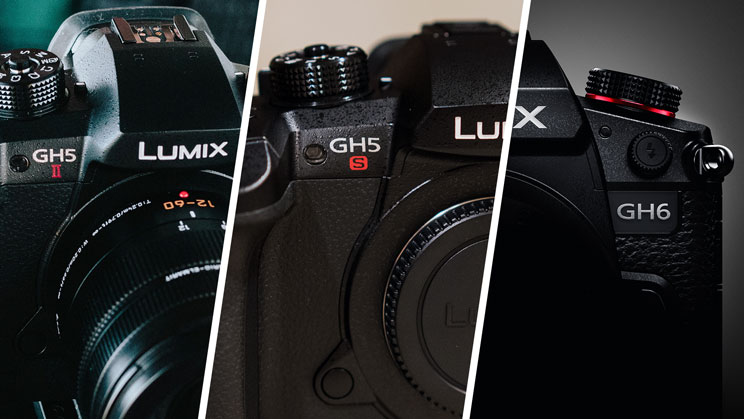
Ethics statement: The information supplied in this article is based upon official specifications. We were not asked to write anything about these cameras, nor were we provided with any sort of compensation. Within the article, there are affiliate links. If you decided to buy something after clicking the link, we will receive a small commission. To know more about our ethics, you can visit our full disclosure page. Thank you!
1. Sensor
The GH5 II features a sensor with 20.3MP and no low pass filter. It is an updated version of the sensor found inside the original GH5 and has an Anti Reflection coating to reduce sensor flare in harsh backlit situations.
The GH5S has a 10.2MP sensor. The lower resolution has been designed to maximise low light performance. The sensor also supports a multi-aspect ratio. It is slightly bigger than the area covered by the lens, which makes it possible to change aspect ratios such as 4:3 or 16:9 while keeping the same diagonal angle of view.

The GH6 has a brand new sensor with 25.2MP and no low pass filter. It is the first time that we see a higher resolution than 20 megapixels on a micro four thirds camera.
It is unclear whether the sensor has a stacked design or not (DPreview believes it’s BSI at least) but Panasonic says it has a very fast readout and the camera comes with an upgraded Venus Engine that is twice as fast as that found on the S1H full frame camera. The company has also created a new intelligent noise reduction algorithm for stills and video.
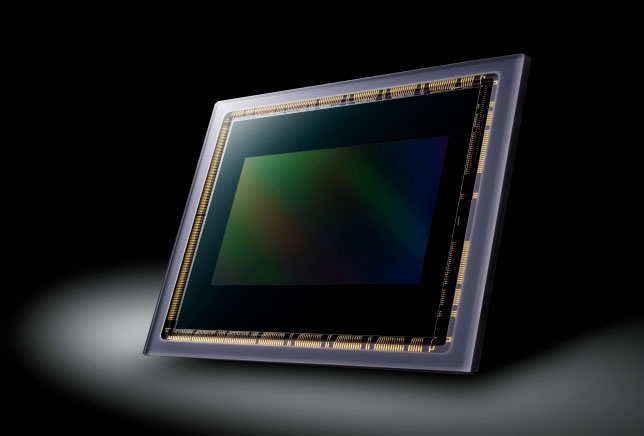
2. ISO range
The GH5 II has an ISO range that goes from 200 to 25600, plus a 100 ISO value (extended). Note that for video, the maximum level is 12800 ISO.
The GH5S has wider range that goes from ISO 160 to 51200, with extended values down to 80 and up to 204800. All settings are available for stills and video.
Furthermore, the GH5S has Dual Native ISO: one at ISO 400, the other at ISO 25600. This means that, for example, when you record at 6400 ISO, the camera will amplify the gain from the second native ISO (2500) rather than the first (400). In other words, it amplifies the gain by 1 stop and 1/3, rather than 4 stops, which means less noise.
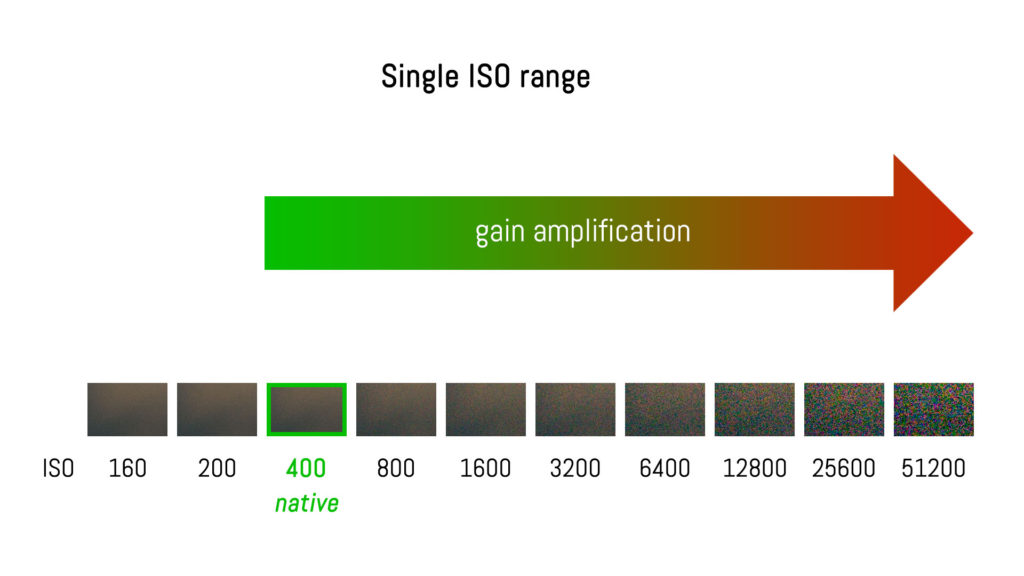
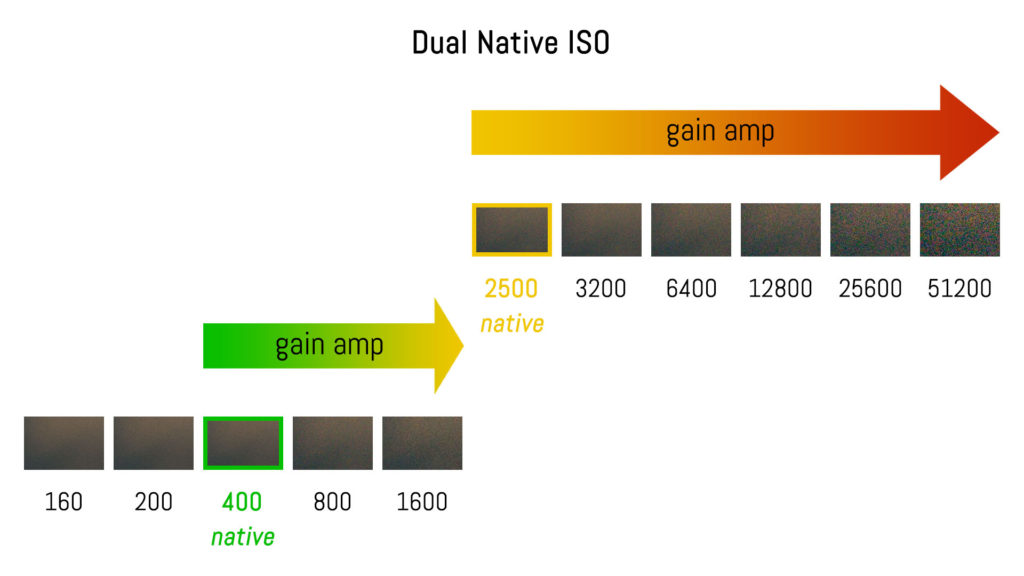
The GH6 has a range of 100 to 25600 ISO. The main difference with the GH5 II model is that ISO 100 on the new camera is native, and the extended ‘low’ value goes down to ISO 50.
What’s more, the GH6 sensor works with a dual output gain. Unlike the GH5S, the two outputs are read at the same time and combined to improve details in the shadows and highlights.
In photo mode, the dual output gain works automatically from ISO 800 (you don’t need to activate any settings). In video mode, you have to activate it manually with a function called Dynamic Range Boost (more on this further down).
3. Image quality settings
Despite being a camera designed for video more than anything else, the GH5S has one feature not found on any other micro four thirds camera from Panasonic or Olympus: 14-bit RAW output for still photography (which means more colour information in the RAW file in comparison to the other models that are 12-bit). I sometimes wonder why Panasonic even bothered with a specification like this on a video-centric camera like the GH5S, but it’s there.
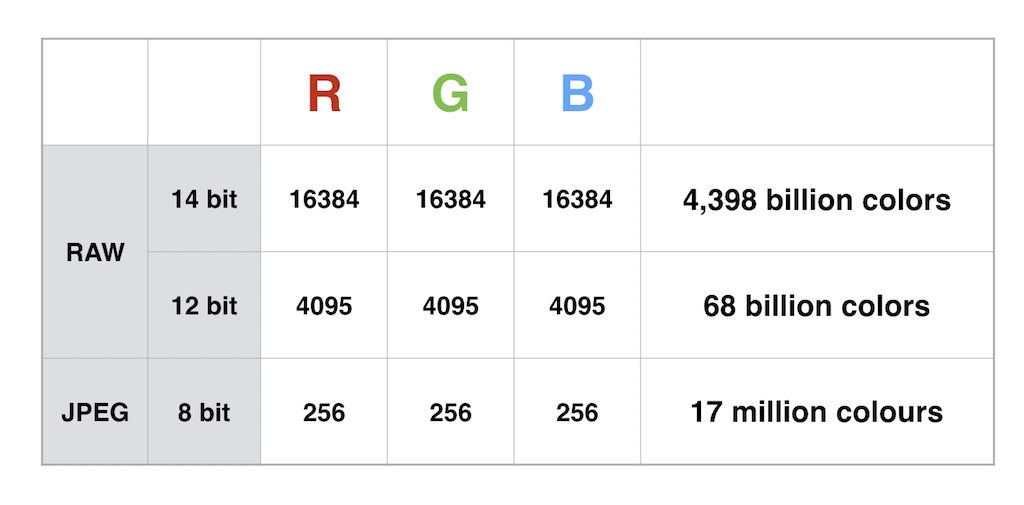
The GH5 II and GH6 on the other hand get additional picture profiles not found on the GH5S, such as Cine-Like D2 and V2, Flat, L. Classic Neo and L. Monochrome S.
4. Video capabilities
This is the big chapter, with so many specs to talk about!
The GH5 II can record Cinema 4K and Ultra HD 4K up to 50/60p. It can also record anamorphic 4K (up to 60p) and 6K (up to 30p).
Internal recording in 10-bit 4:2:2 is available up to 30p with the All-Intra H.264 codec and a bitrate of 400Mbps. If you record at 50 or 60p, 10-bit 4:2:0 is available with the H.265 codec (200Mbps).

The GH5S has similar characteristics to the ones described above but with a few missing parts:
- There is no 6K in anamorphic mode
- 4K 50/60p is limited to 8-bit 4:2:0 internally
The GH6 pushes the boundaries of the Lumix series to new levels. It can record:
- 4K / DCI 4K up to 60p (4:2:2 10-bit, max. 800Mbps)
- 4K up to 120p (4:2:0 10-bit, max. 300Mbps)
- 5.7K up to 60p (4:2:0 10-bit, max. 300Mbps)
- 5.8K anamorphic up to 30p (4:2:0 10-bit, max. 200Mbps)
- 4.4K anamorphic up to 60p (4:2:0 10-bit, max. 300Mbps)
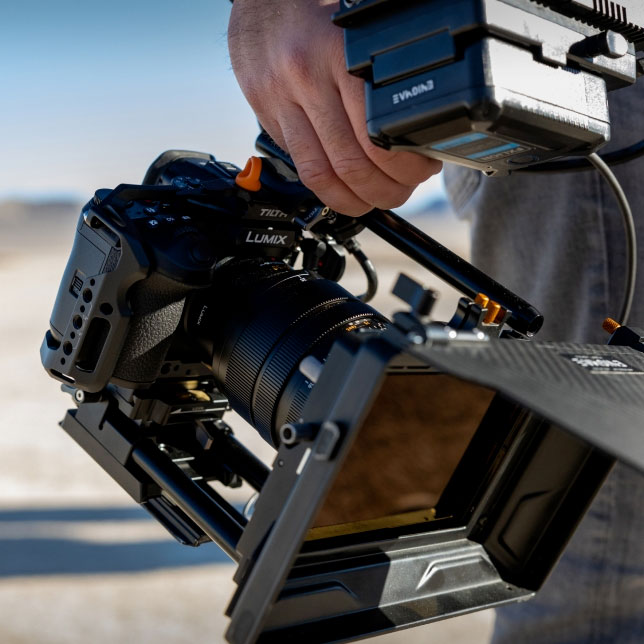
What’s more, the GH6 can record in the popular Apple Prores 422 and 422 HQ format internally, for a maximum bitrate of 1900Mbps. For now it is limited to 5.7K and 30p, but a future firmware update will make it available for other resolutions and frame rates.
In Full HD, the GH5S does better than the GH5 II with a maximum frame rate of 240fps, as opposed to 180fps (when using the VFR mode). The GH6 beats them both with a maximum of 300fps (VFR).
The GH5S also has one exclusive option, for now: it outputs 12-bit Apple Prores RAW video to the Atomos Ninja V recorder via the HDMI output, thanks to firmware 2.0. The GH6 will be able to do the same with a future update, and will output 4K 120p.
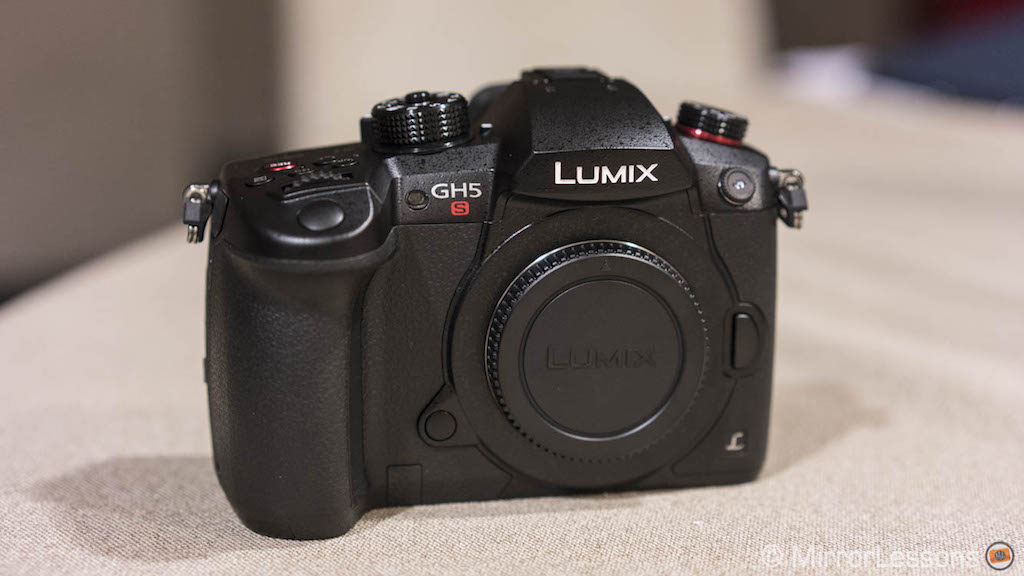
Neither camera has a recording limitation, so they keep going until the battery runs out, or the SD cards are full. That is also valid for the GH6 in all recording modes, according to Panasonic.
The GH5 II and GH5S have a lot of advanced settings for video makers, including pre-installed V-Log L and HLG profiles, among many other things (zebra, waveform, etc.).
The GH6 comes with the V-Log profile instead of the lighter V-Log L and has the new Dynamic Range Boost mode that adds one extra stop (13Ev instead of 12Ev when recording in V-Log). It achieves this by reading the sensor’s dual gain outputs at the same time. The minimum ISO available is 800, or 2000 if you record with V-Log. It works up to 60p.
Here is a table to recap all the main specs.
| GH5 II | GH5S | GH6 | |
|---|---|---|---|
| 5.7K | – | – | up to 60p |
| Anamorphic | 6K 30p 4K 60p | 4K 60p | 5.8K 30p 4.4K 60p |
| 4K / DCI | up to 60p | up to 60p | up to 120p |
| 10-bit 4:2:2 (H.264) | up to 4K 30p | up to 4K 30p | up to 4K 60p |
| 10-bit 4:2:0 (H.265) | up to 4K 60p | – | up to 4K 120p 6K anam. |
| Bitrate (max.)* | 400Mbps (ALL-I) | 400Mbps (ALL-I) | 800Mbps (ALL-I) 1900Mbps (Prores) |
| ISO for Video | 100 12800 | 80 204800 | 100 12800 |
| High Speed Recording (1080p – VFR) | 240p | 120p | 300p |
| Rec. limitation | None | None | None |
Concerning audio, the GH6 can record 4 channels, combining the microphone input with the optional DMW-XLR1 adapter.
Other things worth mentioning are the tally lamp on the front of the camera to indicate you are recording, and the possibility of loading LUT profiles from a memory card.
5. Image stabilisation
The GH5 II features a stabilisation system with a rating of 6.5 stops of compensation when using sensor and optical stabilisation together (Dual IS). The GH6 boosts the performance to 7.5 stops.
The two cameras have an advanced algorithm to correct shakes with natural results during movie recording in comparison to older models. This comes from the flagship S1H full frame mirrorless camera.
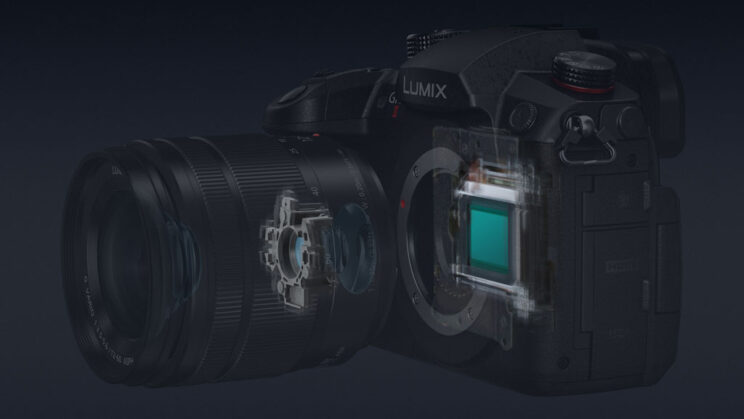
The GH5S doesn’t have in-body stabilisation. Panasonic made this decision after listening to the feedback of video makers who said that IBIS can be affected by micro vibrations when doing camera car shots or other kinds of specialised shooting. You can of course rely on optical stabilisation with OIS lenses, or use a third party gimbal, the latter being a solution adopted by many filmmakers.
The GH6 can take advantage of its IBIS mechanism for an additional function called High Resolution mode. The camera captures 8 shots and moves the sensor by half a pixel in between. Then it has to compute all the frames to create a high resolution image of 50MP or 100MP. This is not entirely new. The same function (with a different megapixel output) is available on the G9 as well as various Lumix full frame cameras.
For the first time however, the GH6 can take a high-res shot hand-held, an option that until now was exclusive to Olympus/OM System cameras. What’s more, the camera can account for moving elements in the frame and eliminate artefacts. I’ve tested this on a Lumix S1R as well as the G9 and it is quite effective, although the zone with motion has a reduced resolution.
6. Autofocus and Speed
The three cameras feature Panasonic’s contrast detection system, which is called DfD (Depth from Defocus).
The GH5 II and GH5S have very similar features and algorithms, which include deep learning with face, eye and body detection, as well as animal detection (make sure to have the latest firmware installed on the S model). They have a total of 225 points.
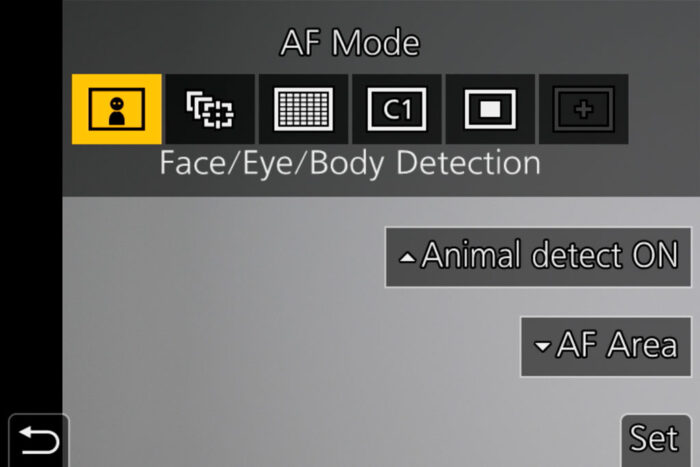
The GH6 comes with an updated DfD AF which is three times faster than previous cameras, according to Panasonic. It can use more points (314) and subject recognition (eyes, human, animal) is available with all focus area modes. The new camera also has a new setting called Focus Limiter, which allows you to see a limit for the minimum and maximum focusing distance.
Then we have the minimum sensitivity in low light, where the GH5S has a 1 stop advantage over the GH5 II and GH6: -5Ev vs -4Ev.
The continuous shooting speed for still photos goes to a maximum of 12fps on the GH5 II and GH5S. If you shoot 14-bit RAW on the GH5S, the speed decreases slightly to 11fps.
The GH6 can do a maximum of 14fps and has three super fast modes that go up to a maximum of 75fps when using the electronic shutter. However, if you want continuous autofocus, the speed is much lower: 8fps (mechanical), 7fps (electronic).
As for the buffer, the GH5 II does a bit better than the other cameras when using the normal burst modes. Interestingly, the GH6 has a better buffer when using one of the SH modes, delivering a total of 200 images approximately (with RAW).
| Burst | GH5 II | GH5S | GH6 |
|---|---|---|---|
| 14fps | – | – | 65 RAW 95 JPG |
| 12fps | 108 RAW 1000 JPG | 80 RAW 600 JPG | – |
| 20fps | – | – | 200 RAW / JPG |
| 60fps | – | – | 200 RAW / JPG |
| 75fps | – | – | 200 RAW / JPG |
7. Design
The GH5 II and GH5S are identical when it comes to body design and dimensions, but the mark II model is slightly heavier (727g vs 660g). The GH6 is the largest and heaviest out of the three, mainly due to the built-in cooling fan and bigger front grip. They are all weather sealed.
- GH5 II: 138.5 x 98.1 x 87.4mm, 727g
- GH5S: 138.5 x 98.1 x 87.4mm, 660g
- GH6: 138.4 x 100.3 x 99.6mm, 823g
The fan on the GH6 can be set to run continuously, or only when necessary.

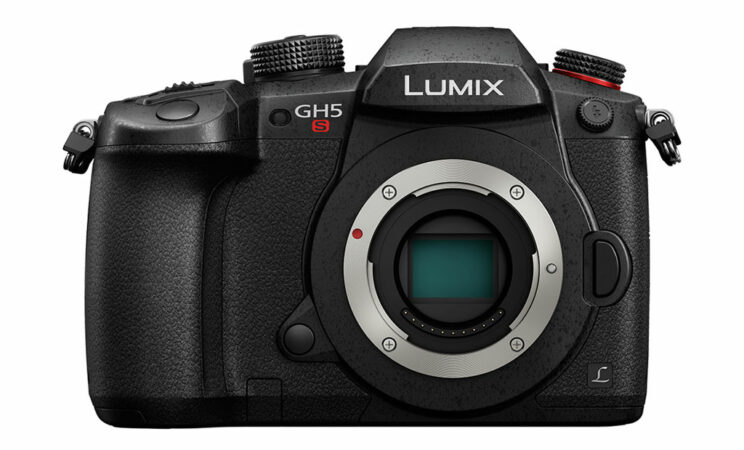
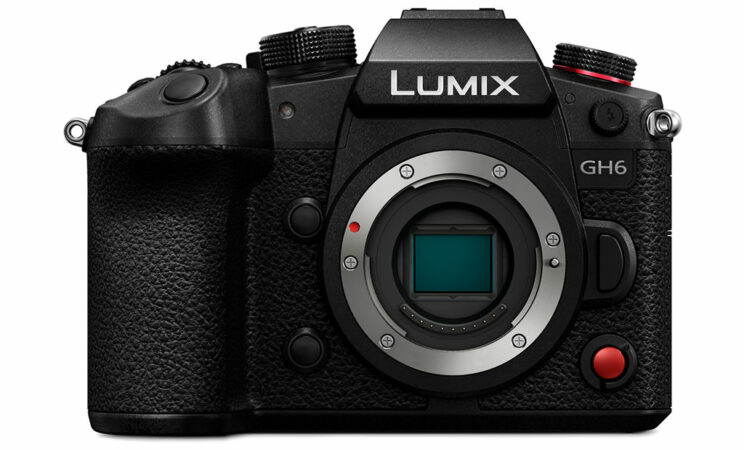
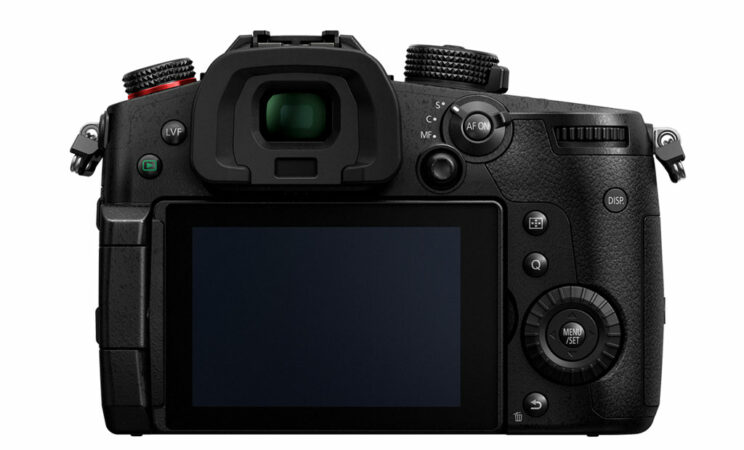

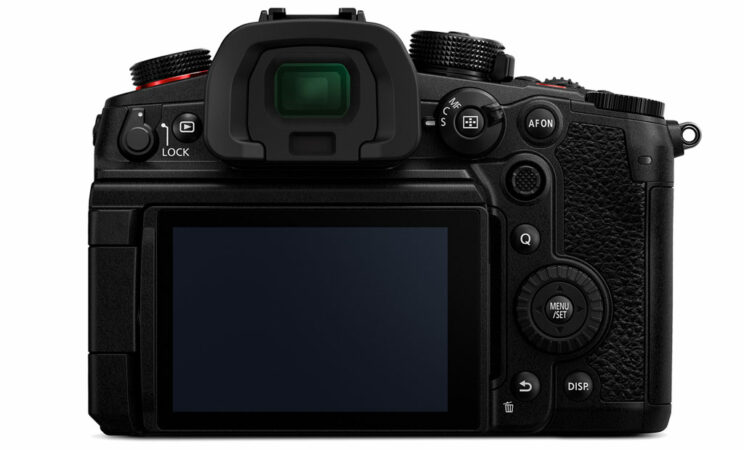
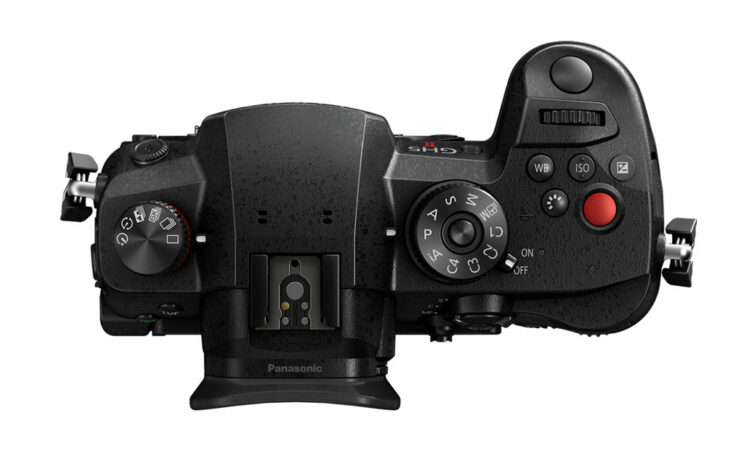
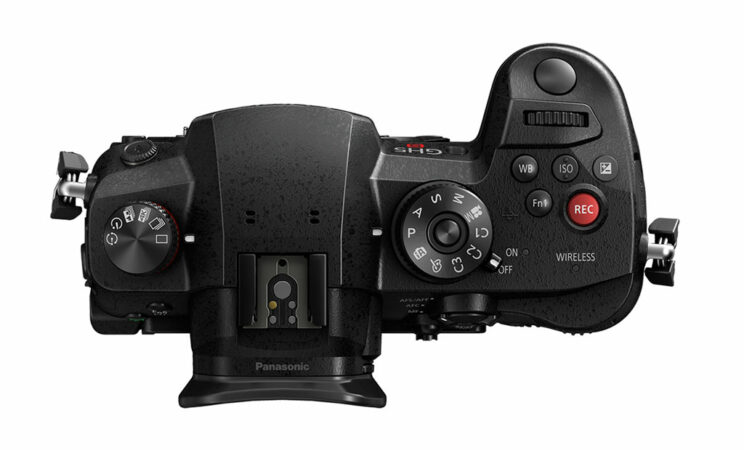
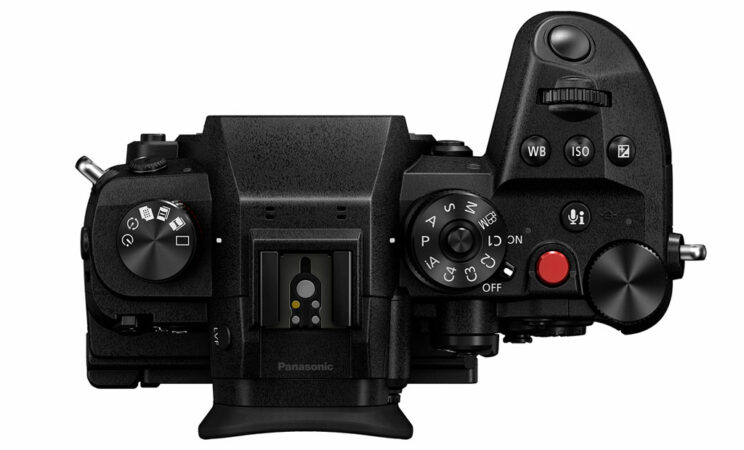
The button layout is very similar overall, especially between the GH5 II and GH5S. The GH6 has an additional lock switch at the rear, one extra function button near the mount and a second red video recording button on the front.
Interestingly, at the bottom of the GH6, you will find a secondary hole near the tripod 1/4″ socket, which is meant for video or cinema tripod plates that include an anti-spin or anti-rotation pin.
The electronic viewfinder is the same for the three cameras. It features:
- a 3.68M dots OLED panel
- 0.76x magnification
- a maximum refresh rate of 120Hz
- an eyepoint of 21mm
The rear LCD monitor also presents similar characteristics with a 3.2-in panel and touch sensitivity. The one on the GH6 and GH5 II have slightly more resolution (1.84M vs 1.62M). They all have a multi-angle mechanism but the one on the GH6 can also be pulled up to 30˚ (like the Lumix S1H). The latter helps the LCD to stay clear of the various cables connected to the side of the camera.
Concerning the physical ports, they have:
- Full size HDMI (Type A)
- USB Type C (5Gbps on GH5S / GH5 II and 10Gbps on GH6)
- 3.5mm mic input
- 3.5mm headphone output
- 2.5mm remote input
- flash sync socket (can be used to ouput TC on the GH6 with an adapter)
Finally, the GH5S and GH5 II come with two SD card slots and UHS-II compatibility.
The GH6 has one slot for CFexpress (Type B) and one for SD UHS-II. The CFexpress card, in addition to helping clear the buffer more quickly in photo mode, is required when recording video at a bitrate higher than 600Mbps.
A future firmware update for the GH6 will allow the camera to record video to an external SSD via USB.
8. Extra Features
Curiously, Panasonic removed from the GH6 certain features such as 4K / 6K Photo and Focus Stacking, which you can find on many other Lumix models including the GH5 II and GH5S (the latter has 4K Photo, not 6K).
One useful feature for video makers is Focus Ring Control, which allows you to control how the focus ring behaves when rotated at different speeds. Note that not every lens is compatible (see the list in our GH5 vs GH5 II article) and you’ll need to update the firmware of these lenses.
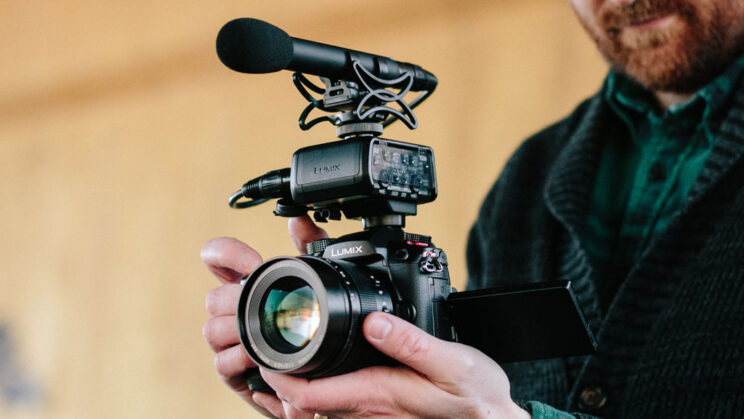
An interesting addition to the GH5 II is a set of options to help you make live streaming videos using just the camera and your smartphone.
After installing the free Lumix Sync app on your Android or iOS device, you will be able to connect wirelessly to the smart device and stream directly to platforms such as YouTube, Facebook (and more) using the phone’s wifi or cellular connection. The maximum quality is 1080p and 60p.

Alternatively, it will be possible to connect directly to a Wifi Router, or use the 4G/5G data of your phone with the USB cable. A wired IP connection to the computer will also be possible (some of these options will require a firmware update that is scheduled for later in 2021).
Finally, there is also the possibility of turning the GH5S and GH5 II into webcams with the Lumix Webcam Software. (I couldn’t find confirmation for the GH6 yet.)
9. Battery and USB Power
The three cameras are compatible with the same battery type. The one shipped with the GH5 II and GH6 is more recent (DMW-BLK22) and has more amperage (2200mAh vs 1860mAh on the GH5S one).
As for the battery life, here is the official CIPA rating:
| Standard | Power Save mode | |
|---|---|---|
| GH5 II | 400 frames | 1200 frames |
| GH5S | 440 frames | 1300 frames |
| GH6 | 360 frames | 850 frames |
One feature only found on the GH5 II and GH6 is the possibility to power the camera via the USB C port while in use, which is a great way to extend the battery life without the need to swap batteries.
Finally, there won’t be a battery grip available for the GH6.
10. Price
The GH5 II can be found at the retail price of $1500, €1400 or £1450 (body only).
The GH5S was launched at higher price, but can now be found for $1900 / £1800 / €1800 for the body alone.
The GH6 is the most expensive option and comes in at $2200, £2000 or €2400.
Prices are as of February 2022.
Conclusion
It’s interesting to see that there are now three high-end GH cameras, each with their own unique characteristics that can target different needs in the video making community.
The GH5 II is the least expensive model and its Live Streaming features can meet the increasing demand of streaming professional content online.
The GH5S has the advantage of better high ISO performance, and the lack of sensor stabilisation will suit those who prefer to rely on external solutions to stabilise the footage.
Then we have the GH6 with state of the art technology: a new sensor, more video resolution, more frame rates and more codecs (including Prores!). It’s larger, heavier and more expensive, but Panasonic is pushing the boundaries of micro four thirds when it comes to video, once more.
We often forget that these cameras also have interesting features for still photos, like the high res hand-held mode of the GH6, or 4K/6K photo on the other two. The AF system still relies on DfD technology, so we’ll have to see how well the new camera performs with difficult subjects or challenging conditions.
Last but not least, I’m sure some of you are wondering if the GH6 sensor and some of its technology will make its way onto a future G9 mark II, which is more photo-oriented. What do you think?
Reminder: the links below are affiliate links. If you decided to buy something after clicking the link, we will receive a small commission.
Check price of the Lumix GH5 II on
Amazon | Amazon UK | B&H Photo | eBay
Check price of the Lumix GH5s on
Amazon | B&H Photo | eBay
Check price of the Lumix GH6 on
B&H Photo
